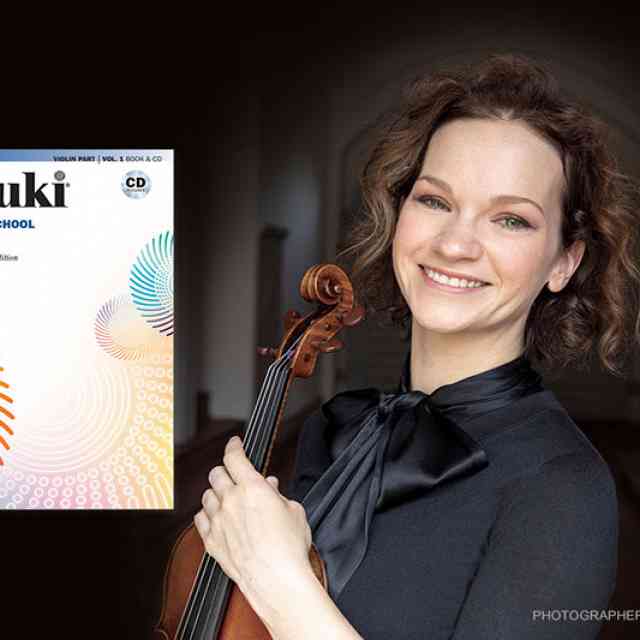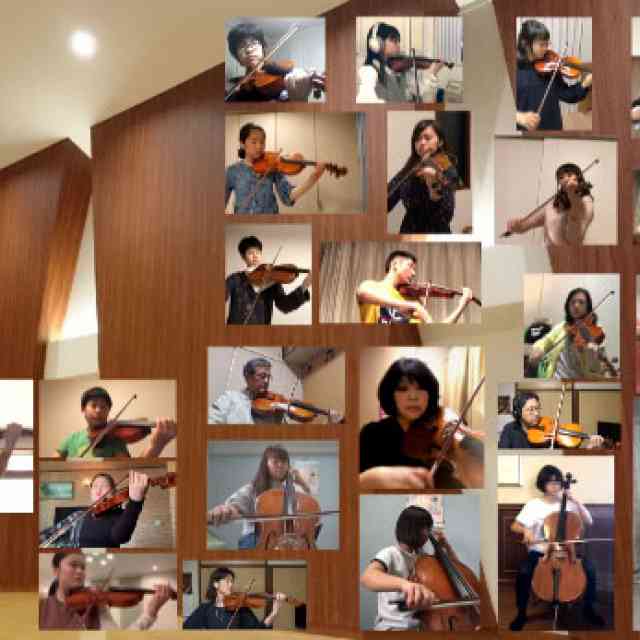The study of Viola Concerto in G Major by Georg Philipp Telemann, found toward the end of Book Four, presents a unique opportunity for the performer to implement elements of historically informed performance practice even while using today’s stringed instruments. Practicing Telemann’s concerto through the lens of historically informed performance practice requires familiarity with the instruments used in Telemann’s lifetime as well as knowledge of the broader context in which this work was written. Considered to be one of the first known viola concertos, it presents a formidable yet rewarding challenge to the student violist. I first learned Telemann’s concerto as an 11-year-old in my third year of playing the viola, and I revisited the piece as a junior in high school when I performed it with my school orchestra. Now, as a professional who performs frequently on both modern and baroque violas, I teach and practice Telemann’s concerto through the lens of historically informed performance practice, hoping to instill a deep appreciation of Baroque music in my students and audiences.
The first crucial step for any performer interested in studying a piece of music through the lens of historically informed performance practice is to immerse oneself in the functionality, feel, and sound of the instruments used at the time of the music’s writing. Telemann, one of the most prolific composers of the Baroque era, wrote the Viola Concerto around 1715 for a weekly concert series while he was living in Frankfurt, Germany. At the time of the concerto’s writing, the bows that performers were using were curved slightly outwards from the middle of the bow, and bows were more heavily weighted at the frog. The baroque bow has a shape that naturally works to the performer’s advantage in shaping and tapering each note. In fact, the bow was the main vehicle of expression in music of the Baroque era, while vibrato was used as an ornament or decoration to only certain notes. On the other hand, the modern bow is made for projection, and the weight of the modern bow is distributed more evenly from frog to tip. The design of the modern bow lends itself to more uniform, connected sound, and vibrato tends to be the main form of expression. The performer studying through a historically informed lens must also take into consideration the difference between today’s steel strings and gut strings that were used in the Baroque era. The more sensitive gut strings (usually made out of sheep gut) naturally respond to the shape of the baroque bow, while playing on modern steel strings requires more of an effort from the performer in making any kind of shape with the bow.
Enter the term messa di voce, which, according to the Oxford Music dictionary, is defined as the singing or playing of a long note so that it begins quietly, swells to full volume, and then diminishes to the original quiet tone. For string playing in music from the Baroque era, mastering messa di voce is the key to mastering the baroque bow. Giuseppe Tartini (1692–1770) wrote the following letter in 1760 to his student Maddalena Lombardini:
Your main study should be the use of the bow, in order to make yourself mistress in the expression of whatever can be played or sung. . . First, exercise yourself in a messa di voce upon an open string, for example, upon the second, which is the D string. Begin pianissimo, and increase the tone by slow degrees to fortissimo; and this should be equally done on the down-bow and the up-bow. Set out on this exercise at once, and spend at least an hour on it every day, though at different times, a little in the morning, and a little in the evening; and keep constantly in mind that this is, of all exercises, the most difficult and the most important. When you master this exercise . . . every degree of pressure upon the string will become easy and certain; and you will be able to execute with your bow whatever you please.
Not every note of music from the Baroque era will be played as a messa di voce, but practicing the technique helps string players precisely shape each note with the baroque bow, some with a decay, some growing towards the next note. Even when a note begins forte, being able to execute messa di voce allows the performer to sink the bow into the string (albeit quickly) without a harsh accent that might naturally accompany a similar forte played on a modern bow.
How does today’s performer gain experience on a baroque bow and gut strings? Most students don’t have access, especially in today’s socially distant world. I will sometimes ask my students to hold their bows five to six inches above the frog as they play a passage in Telemann’s concerto.
While the physical shape of the baroque bow and the responsiveness of gut strings is lacking in this experiment, the extra weight of the bow near the bow hand forces the performer’s right hand fingers to become more flexible. This newfound dexterity allows the performer to practice messa di voce on the modern bow while holding the bow closer to the frog as normal.
The following details an example in which I use the practice of messa di voce to shape a phrase in the context of a slow tempo.
In the third movement of Telemann’s viola concerto, I shape the opening phrase towards the downbeat of first measure, and again towards the downbeat of the second measure. I’ve detailed what kind of direction I give each note with the lines drawn underneath the notes. The bowings from Telemann’s manuscript are drawn over the notes for reference.
Messa di voce is not simply a technique to master for slower tempi in Baroque music. Below is an example of how I shape a phrase using the bow in the opening of the fourth movement of the concerto:
In both examples, the curve of the baroque bow allows the performer to avoid harsh beginnings of notes and encourages circular motion in the right wrist as the performer transitions to a down-bow from an up-bow or a retake of the bow. If the performer will keep these natural advantages in mind while using a modern bow, each note will come to life with resonance and shape.
Studying the Telemann concerto through the lens of historically informed performance practice also involves research of the broader context of other music written in the Baroque era. Much of the music written in Western Europe in Telemann’s lifetime was written for dance, which was made up of a combination of large and small steps with the larger step typically on the first beat of every measure. Therefore, even in Western European Baroque music that wasn’t directly written for dancing, the first beat of every measure is generally emphasized, with the other beats in the measure falling away from or leading to the next first beat. With the curved baroque bow in mind, the performer can use her familiarity with messa di voce to create a rounded emphasis on the strong beat, while letting the bow make smaller, lighter strokes for the weaker beats. The performer should also distinguish a hierarchy of strong beats within longer phrases. For example, in the opening of the first movement, the performer would generally avoid an accent at the beginning, lead slightly to measure 10 but then truly arrive at the downbeat of measure 12, all the while keeping the notes resonant and light, as though in a solemn dance.
Telemann’s audience members would have been aurally familiar with a certain musical structure. Therefore, surprising or unexpected harmonic shifts were how composers like Telemann infused drama into their works and grabbed the attention of their listeners. Today’s performers can also highlight these “odd” notes to inspire drama and expression. For example, in measure 9 of the third movement of Telemann’s concerto the B flat is an entirely unexpected note in the tonic key of the movement (e minor). Telemann uses this B flat to resolve to a g minor chord. Then, Telemann repeats the B flat in measure 10, this time using it to build tension to an eventual b minor tonic. The performer can spotlight Telemann’s intentions by bringing out these special notes with a combination of left and right hand finesse.
Finally, around the time Telemann was writing his viola concerto, composers like Bach were writing highly contrapuntal music for solo string instruments, with notes in all registers of the instrument arranged as if two, three, or even four instruments were actually playing instead of just one. Examples of such writing are Bach’s Cello Suites, BWV 1007–1012 and the Partitas and Sonatas for Solo Violin, BWV 1001–1006. Both have been transcribed for solo viola.
Bach’s solo works are important for the performer to keep in mind while studying the Telemann concerto because of the prevalence of counterpoint between two or more “voices” in several passages. In the following example from the second movement, two voices are distinguished from each other at measure 45 and finally meet together again at the downbeat of 52. The performer can bring these different voices out with different weight and speed of the bow, keeping the curve and weight of the baroque bow in mind.
At the end of the fourth movement, the performer can actually distinguish between three separate voices L (lower), M (middle), and T (top) as shown below.
Being familiar with the style of other works written in the Baroque era informs the performer of elements to emphasize in Telemann’s concerto, such as the strong connection to dance as well as contrapuntal tendencies.
Studying Telemann’s concerto through the lens of historically informed performance practice gives the performer a rewarding opportunity to bring the work to life on today’s instruments. Armed with the knowledge of both musical context and functionality of period instruments, the performer can confidently give any piece of music a fresh and researched interpretation.









